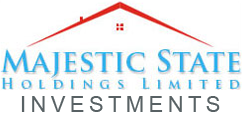Orthostatic hypertension is a condition characterized by a sudden increas suplemento alimenticio tonerine in blood pressure when an individual changes from sitting or relaxing to an upright setting. This phenomenon, likewise known as postural hypertension, can cause numerous health and wellness difficulties if left unmanaged. In this short article, we will delve into the causes, symptoms, as well as treatment options for orthostatic hypertension.
Causes of Orthostatic High Blood Pressure
Orthostatic high blood pressure can develop due to a wide range of variables. It frequently happens as an outcome of disorder in the autonomic nerves, which controls high blood pressure as well as heart rate. Some underlying root causes of orthostatic hypertension include:
- Endocrine problems, such as diabetes or adrenal lack
- Certain drugs, including antihypertensives or alpha-blockers
- Dehydration or liquid loss
- Cardiovascular diseases, such as heart disease or heart shutoff problems
- Neurological conditions, including Parkinson’s disease or several system atrophy
- Anemia or low red cell count
It is necessary to determine the underlying cause of orthostatic hypertension as it can lead therapy as well as administration approaches.
Signs of Orthostatic Hypertension
Orthostatic hypertension offers with a range of signs that might vary in strength from person to person. These signs typically happen within a couple of mins of standing and might consist of:
- Lightheadedness or faintness
- Feeling faint or passing out
- Migraine
- Blurred vision
- Shortness of breath
- Palpitations or quick heart price
In extreme situations, orthostatic hypertension can bring about drops as well as injuries. For that reason, it is important to look for medical focus if you experience any one of these signs.
Diagnosis as well as Treatment
Diagnosing orthostatic hypertension includes the dimension of blood pressure in various placements. A health care specialist may carry out a tilt table examination, where the person’s blood pressure is checked while they are tilted at numerous angles. This helps determine the extent of blood pressure fluctuations as well as verifies the diagnosis of orthostatic hypertension.
Treatment for orthostatic high blood pressure focuses on taking care of the underlying cause and also easing symptoms. Some typical techniques consist of:
- Adjusting medicines: If particular drugs are adding to orthostatic high blood pressure, a doctor may customize the dose or switch to alternative drugs.
- Raising liquid and salt consumption: Ample hydration and also raised salt consumption can assist stabilize high blood pressure levels.
- Utilizing compression stockings: These stockings apply gentle stress to the legs, which aids in blood circulation and prevents blood merging in the reduced extremities.
- Physical counterpressure maneuvers: Strategies like leg crossing, squatting, or tensing leg muscle mass can assist elevate blood pressure.
- Exercise as well as way of living modifications: Normal exercise, preventing unexpected placement modifications, as well as keeping a well balanced diet regimen can positively impact blood pressure policy.
- Drugs: In extreme situations, medicine to enhance blood volume or improve blood flow may be suggested.
Prevention and also Prognosis
Avoiding orthostatic hypertension entails keeping healthy and balanced way of living habits. This includes staying hydrated, preventing too much alcohol usage, and also exercising routine exercise. In addition, complying with a well balanced diet plan and also handling hidden clinical conditions can help avoid the onset or development of orthostatic hypertension.
The diagnosis for people with orthostatic high blood pressure varies depending on the underlying reason and also monitoring strategies. With appropriate diagnosis and treatment, many people can successfully control their blood pressure and also minimize the impact of signs on daily life.
Conclusion
Orthostatic hypertension is a condition identified by a sudden rise in high blood pressure upon standing. It can be brought on by different factors, consisting of endocrine problems, medicines, or cardiovascular diseases. The signs usually include wooziness, fainting, as well as palpitations. Medical diagnosis includes high blood pressure monitoring in various positions, as well as treatment focuses on attending to the underlying reason, ottomax+ handling symptoms, and also making way of living adjustments. By complying with proper treatment plans and also adopting healthy habits, individuals with orthostatic hypertension can efficiently handle their condition as well as enhance their general lifestyle.


